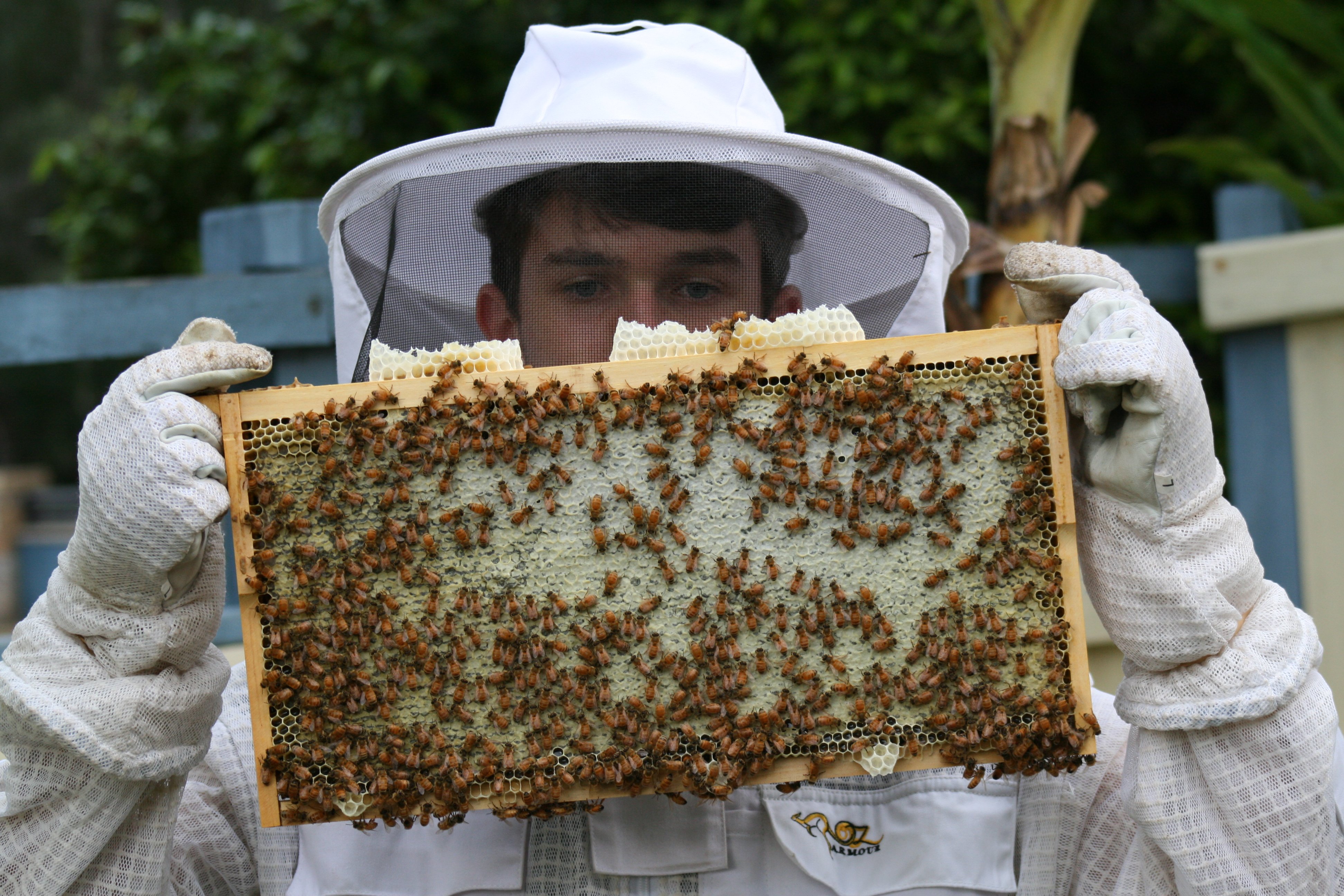Here's my entry into this weeks KillerPixContest run by @killerwhale. This week's theme is Bees!!
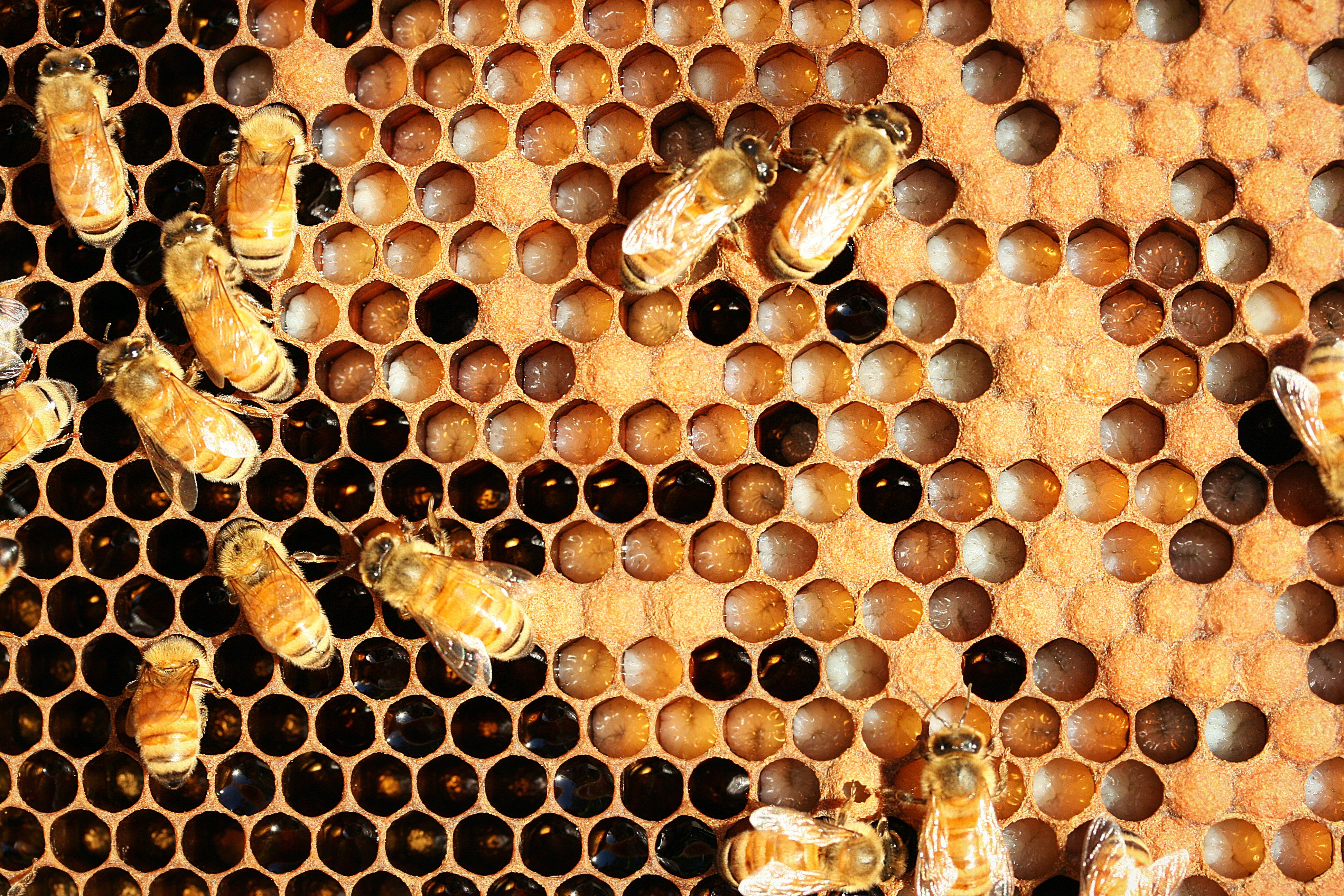
I'm going to take this week's challenge as an opportunity to go inside the brood box, this is where all life begins for a bee. The brood box is the box that sits on the bottom on the hive, the box/es that sit above the brood box are usually honey supers. Honey supers are where the bees store most of their honey. The photos below show you the difference between a honey frame from the honey super and a frame from the brood box.
Most of the honey on this frame has been capped off with a thin layer of wax with a few cells around the edges left to fill.
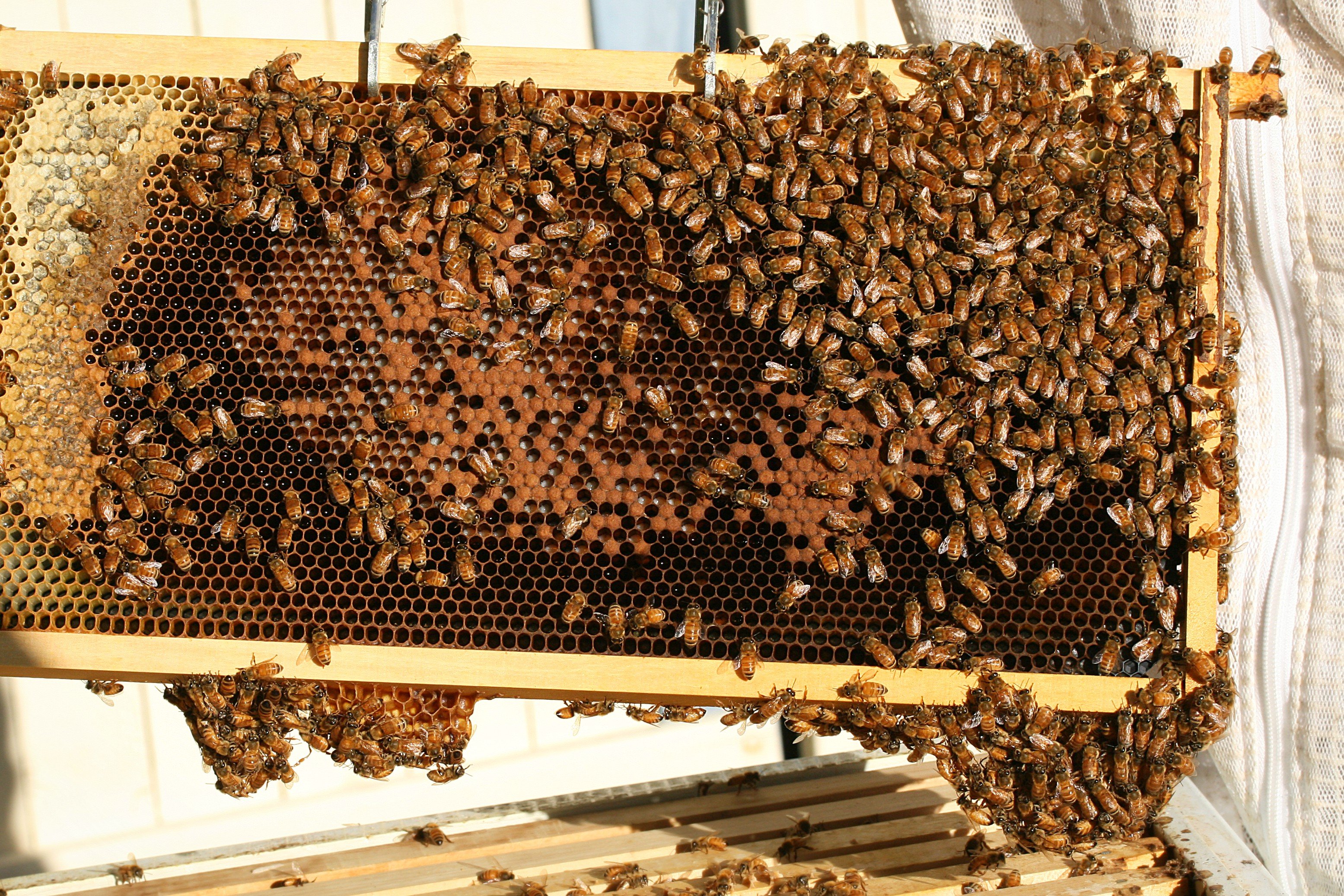
This is a frame from the brood box. The brood box is where the queen bee lives, lays and feeds. By placing an excluder between the brood box and the honey supers, this allows the bees to still pass through to work and store honey but restricts the queen to the brood box as she is too big to pass through (see the photo below of the excluder). This ensures all the honey storage stays on top and keeps the queen safe in one location to lay her eggs.
Honey can also be stored on brood frames as you can see this with frame on the left as well as pollen if they start storing it for the winter. All production slows down over winter (laying of eggs and honey production) as bees don't like the cold.
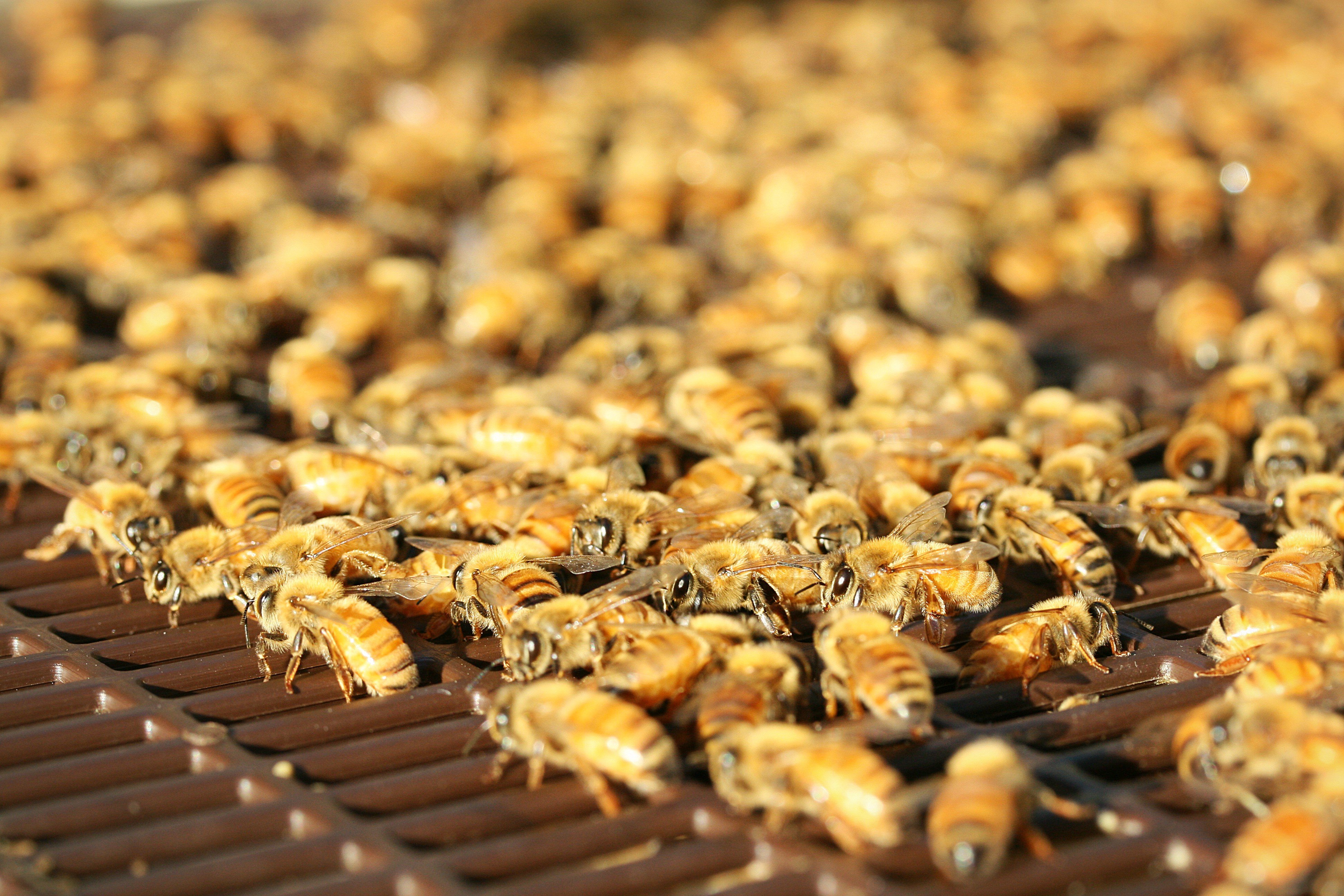
So lets get a closer look at a brood frame...
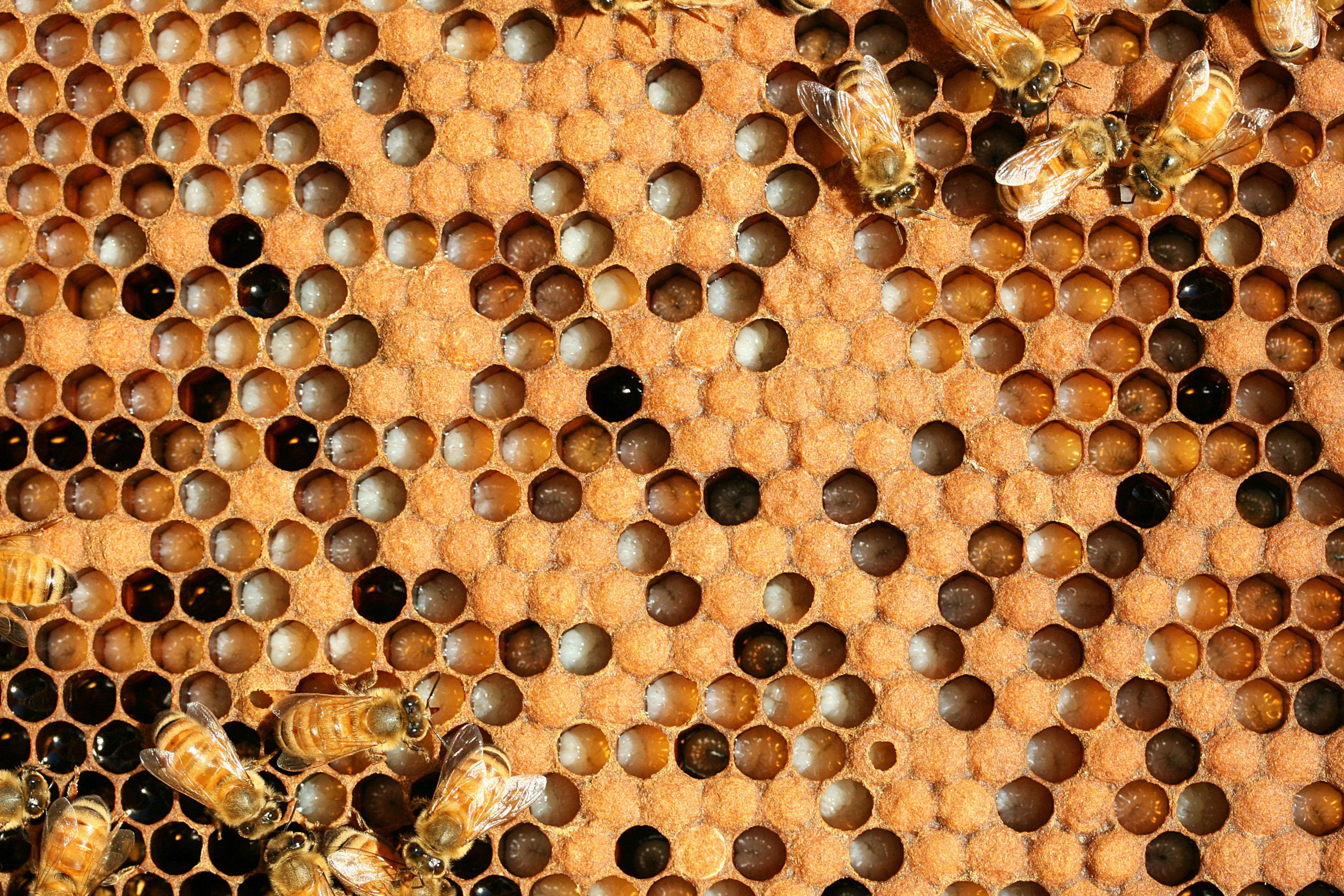
I'll concentrate on the female worker bees as there is usually only one queen present in a hive and male bees which are called drones are only produced by the queen as required. The main job of a drone is to service the queen. Once a drone has mated with the queen, he dies. All the other bees are female worker bees, the cells pictured here are of worker bees.
The queen lays one single egg in each empty cells, the cell must be spotlessly clean too or the queen will move onto the next cell. Her eggs are tiny (about 1.7mm long) and can be quite difficult to see at this stage as they look like a small strand of hair that stands up inside the cell. In approximately 3 days that egg grows into a tiny larvae which look like small white grub. Nurse bees feed and care for the larvae as they continue to grow bigger and bigger in their cells which is what you can see in this photo. If you look closely you can see them at slightly different stages (some bigger, some smaller). On the 9th day the nurse bees cap the larvae inside their cells where they spin a cocoon around their bodies and are left to transform to pupae. These are the cells with the brown capping over the top of them, you can also see one cell in this photo where they've not finished the capping yet. After 12 days the now adult bee chews her way through the wax capping to join the hive. All together, it takes approximately 21 days for a worker bee to grow from laying of the egg to bee.
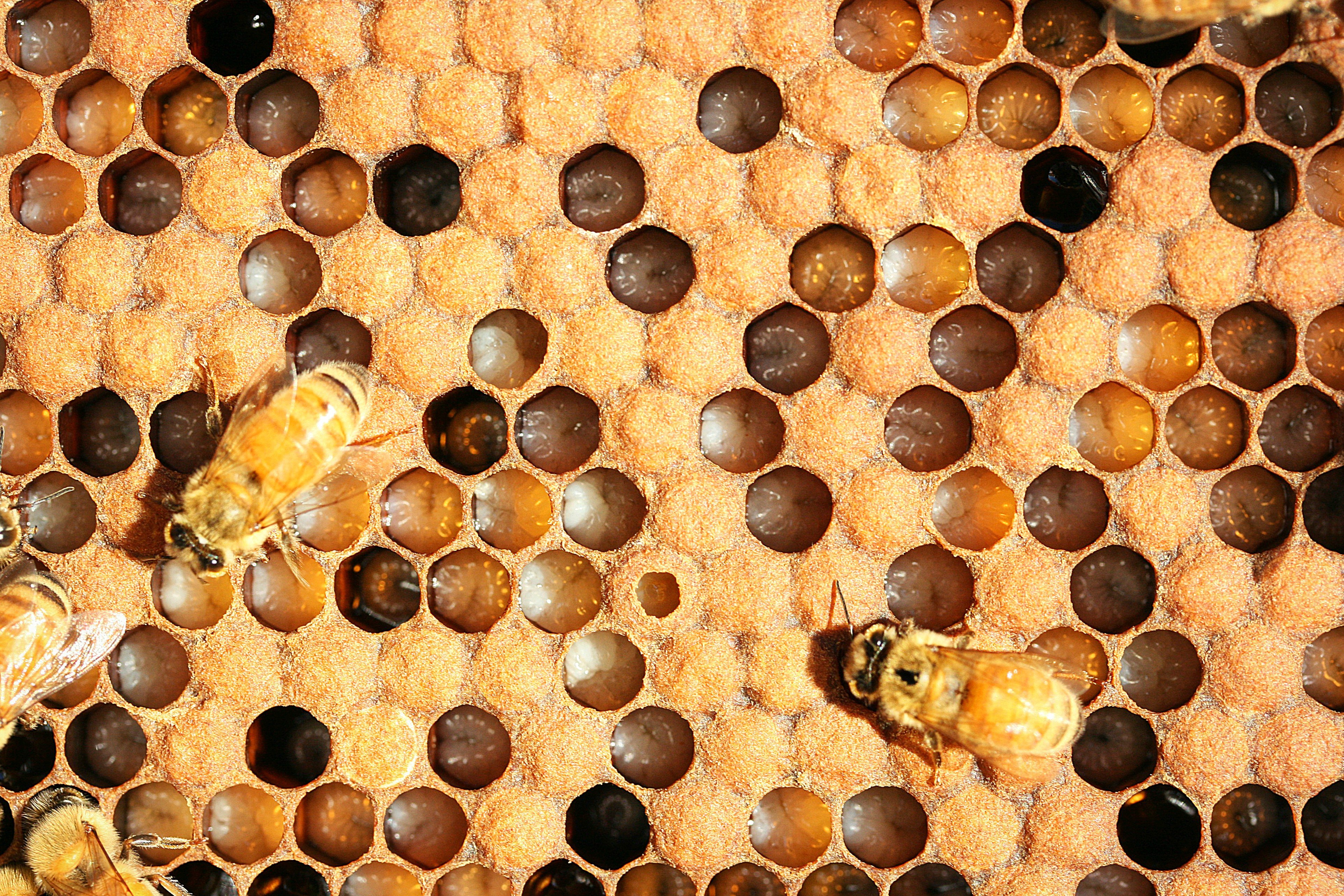
A queen can live three to four years on average, drones usually die upon mating or they are forced out of the hive before winter. The lifespan of a worker bee can vary, a worker bee may live for just a few weeks in the summer but can live for several months through winter.
Check out my other entry here...
@jayclar30/killerpix-photography-contest-bees

